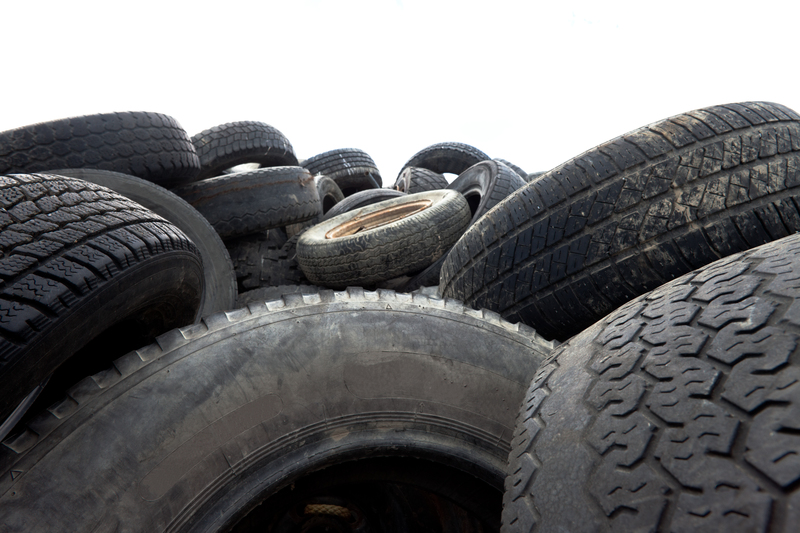From Ancient Strategies to Modern Solutions for Waste: A Comprehensive Overview
Waste management is as old as civilization itself. While today's world faces new and complex challenges associated with increasing population, industrialization, and consumerism, the basic need to manage waste responsibly has always existed. Understanding the evolution of waste management from ancient times to modern days offers valuable insights into sustainable living and inspires innovative solutions for current and future generations.

1. Waste in the Ancient World: Early Methods of Management
Long before waste became a major environmental issue, our ancestors developed practical strategies to handle unwanted materials. Though rudimentary by modern standards, these methods reflect the ingenuity and adaptability of human societies.
1.1. Ancient Mesopotamia and Urban Waste
- One of the earliest cities, Ur (present-day Iraq), had designated areas for dumping refuse.
- Archaeological evidence reveals layers of debris, suggesting the practice of controlled waste disposal as early as 3000 BC.
- To minimize disease, ancient Mesopotamians often moved their settlements after waste became unmanageable.
1.2. Greece, Rome, and Early Sanitation
- The ancient Greeks and Romans introduced public waste removal systems.
- Rome built extensive cloaca maxima, one of the oldest sewer systems, to channel waste away from populated areas.
- Solid waste was often burned, buried outside city walls, or composted for agricultural use.
1.3. Cultural Attitudes Towards Waste
- For much of history, zero waste principles were inherent due to resource limitations.
- Organic waste was typically recycled into the soil, while animal bones, pottery shards, and textile scraps found new life as tools or construction materials.
2. The Middle Ages to Pre-Industrial Era: Changing Waste Practices
As towns grew and trade flourished, managing waste became more challenging. Disease outbreaks like the Black Death spurred early municipal regulations and community-led solutions.
2.1. Medieval Europe and Urban Waste Issues
- Waste was often dumped in streets, rivers, or open fields, leading to unsanitary living conditions.
- King Edward I outlawed waste dumping in the River Thames as early as 1307 to protect drinking water.
- Many cities appointed rakers or scavengers to remove and dispose of refuse, foreshadowing modern waste collection services.
2.2. Innovative Reuse and Recycling
- Before mass production, most items were repaired or repurposed repeatedly.
- Paper and textiles were often recycled, while metals were melted down and recast.
2.3. Lessons from the Pre-Industrial Era
- Communities survived by maximizing resource efficiency and minimizing waste.
- Sustainable practices like composting and upcycling were part of daily life, not environmental movements.
3. Industrial Revolution: Birth of Modern Waste Challenges
The onset of the Industrial Revolution in the 18th and 19th centuries brought about dramatic shifts in waste generation and management. Mass production, urbanization, and new materials like plastics revolutionized consumption--and waste.
3.1. Explosion of Urban Waste
- Rapid population growth in urban centers strained existing waste systems.
- Factory waste--including chemicals, smoke, and industrial byproducts--added new threats to air and water quality.
3.2. Birth of Sanitation and Public Health Movements
- The connection between waste, sanitation, and health became undeniable after cholera outbreaks and other epidemics.
- European and North American cities established municipal waste collection, landfill use, and incineration by the late 19th century.
3.3. Introduction of Waste Infrastructure
- Modern sewer lines, waste collection vehicles, and designated landfill sites became standard in large cities.
- However, waste was often merely moved out of sight, leading to new environmental concerns.
4. The 20th Century: From Waste Accumulation to Awareness
The twentieth century saw an unprecedented increase in waste production, especially in developed nations. The era also marked the beginning of the environmental movement and a shift towards recognizing the global impacts of waste.
4.1. The Age of Convenience--and Consequences
- Disposable products and packaging became widespread, increasing household and industrial waste streams.
- The invention of plastic transformed packaging and manufacturing, but led to persistent pollution problems due to its durability.
4.2. Landfills, Incineration, and Early Recycling Initiatives
- Landfills became the dominant method of waste disposal, often located far from city centers to minimize public discontent.
- Incineration was used widely in certain countries, despite concerns about air quality and toxic emissions.
- Recycling programs for paper, glass, and metals emerged in response to resource shortages and growing environmental awareness.
4.3. Environmental Legislation and Global Awareness
- The 1970s ushered in major environmental policies, such as the Clean Air Act, Clean Water Act, and Resource Conservation and Recovery Act in the United States.
- International conferences and agreements highlighted waste as a critical issue for global cooperation and sustainability.
5. Modern Solutions for Waste: Innovation and Integration
Today, waste management strategies blend lessons from the past with cutting-edge science and technology. The focus has shifted from simply disposing of waste to reducing, reusing, and recycling--often referred to as the 3Rs--and developing circular economic models.
5.1. The Rise of the Circular Economy
- Circular economy models prioritize the continuous use and reuse of resources, minimizing waste and extracting maximum value from materials.
- Designing products for durability, repair, and recyclability reduces the need for virgin resources and waste generation.
- Examples include cradle-to-cradle design and extended producer responsibility (EPR) programs.
5.2. Innovative Technologies: Turning Trash to Treasure
- Waste-to-energy plants convert non-recyclable materials into electricity and heat, reducing landfill volume.
- Advanced recycling technologies, such as chemical recycling and bioconversion, break down plastics and organics into reusable raw materials.
- Smart waste bins and collection systems use sensors and data analytics to optimize pickup routes, encourage recycling, and reduce costs.
5.3. Community-Based Solutions and Behavioral Change
- Zero waste cities and eco-villages emphasize grass-roots action, local composting, and closed-loop systems.
- Public education campaigns continue to reshape consumer habits around buying, using, and disposing of products.
- Incentives for composting and source separation have dramatically improved organic and recyclable material recovery rates.
5.4. Government Policy and Global Collaboration
- Many nations have banned or taxed single-use plastics to reduce ocean and microplastic pollution.
- International agreements such as the Basel Convention regulate the movement of hazardous waste across borders.

6. Challenges and Opportunities for the Future
Despite significant progress, the world still faces formidable challenges:
- The sheer quantity of waste produced continues to grow, especially in emerging economies.
- Improper handling of electronic, medical, and hazardous materials creates health and environmental risks.
- Plastic pollution remains a persistent problem due to slow degradation and widespread use.
- The global inequality of waste management practices results in open dumping and burning in many regions.
Yet, the future holds promise:
- Investment in innovative technologies can turn even complex wastes into valuable resources.
- Policy frameworks and international cooperation can harmonize standards and share best practices.
- Changing consumption patterns--moving away from a "throwaway" society--will have the greatest impact in reducing waste at the source.
7. Conclusion: Learning from the Past to Shape a Cleaner Future
From dumping refuse outside city walls to advanced recycling facilities and smart bins, humanity's journey in waste management is a story of adaptation and innovation. Ancient societies remind us of the value of resourcefulness and respect for nature, while modern technology and policy offer solutions to our most pressing waste dilemmas.
Ultimately, the transition from ancient strategies to modern solutions for waste is about more than just methods--it is a testament to the evolving relationship between humans and their environment. As we strive to create a more sustainable future, blending traditional wisdom with modern science will help us rethink waste not as a problem to conceal, but as an opportunity to regenerate and conserve our planet's precious resources.
Key Takeaways
- Waste management has evolved from basic dumping and burning to complex, integrated systems.
- Ancient strategies emphasized reuse, recycling, and communal responsibility.
- Modern solutions focus on the circular economy, technological innovation, and policy reform.
- Success requires both large-scale infrastructure and individual behavioral change.
- Respecting the lessons of history while embracing new solutions is key to a zero-waste future.
By understanding the journey from ancient strategies to modern solutions for waste, we empower ourselves to make informed choices and drive meaningful change for a cleaner, healthier world.